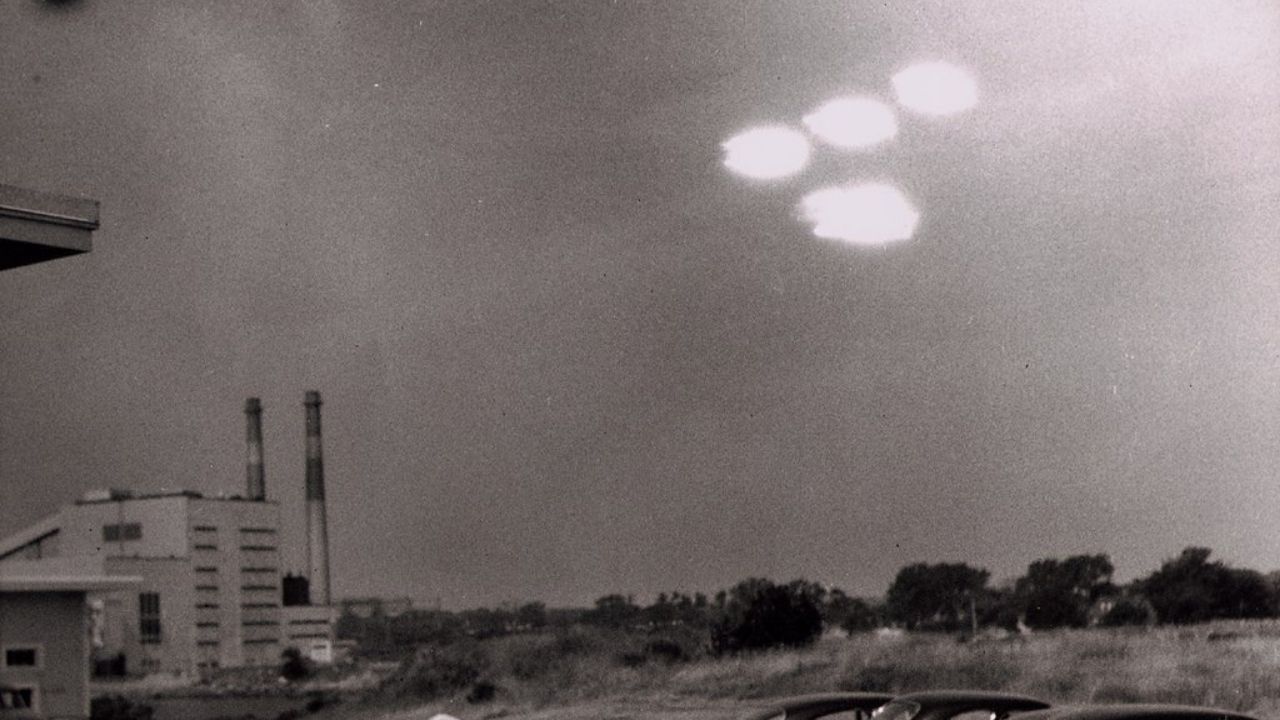The Air Force program “Project Blue Book” was the code name set up in 1952, after numerous UFO sightings during the Cold War.
Thousands of UFO reports were collected, analyzed, and filed. And while Allen Hynek was involved, Project Blue Book collected reports of 12,618 sightings of UFOs (unidentified flying objects), of which 701 remain unexplained to this day.
They officially ended Project Blue Book on January 19, 1970. The mystery of the mysterious UFOs is still far from solved, and not enough was being done to address that problem almost fifty years after the close of Project Blue Book.
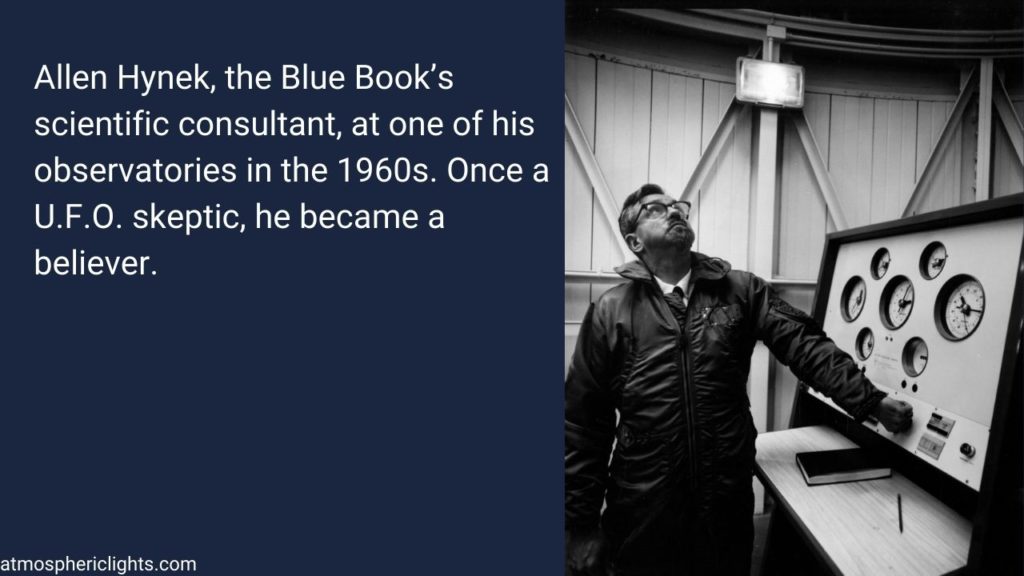
What Was Project Blue Book Main Goals?
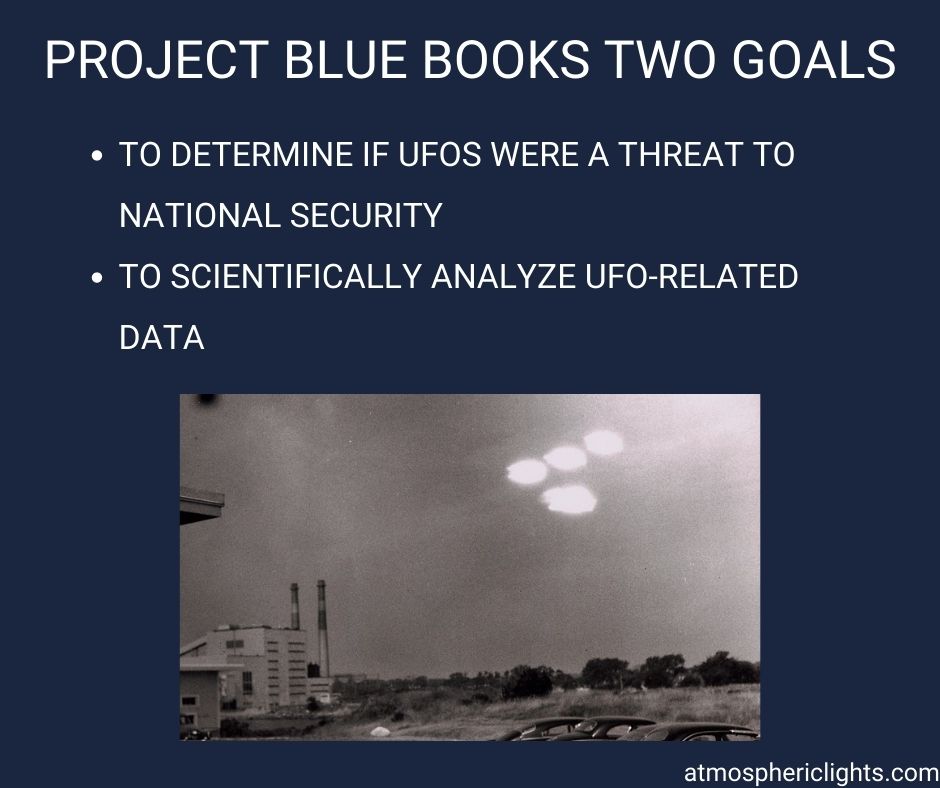
- To determine if UFOs (Unidentified Flying Objects) were a threat to national security.
- To scientifically analyze UFO-related data.
The (AATIP) or Pentagon’s Advanced Aerospace Threat Identification Program, which began in 2007, offered a glimpse into a comparable scenario today: military cases being investigated and filmed without the public knowing.
J. Allen Hynek Blue Book’s Scientific Consultant

The prominent astronomer J. Allen Hynek was recruited as Blue Book’s scientific consultant and was initially assigned to explain away flying saucers (UFOs) as natural phenomena or mistaken identifications.
But he slowly realized that the strange objects were real and needed further scientific study.
General Nathan Twining

This all began in 1947. Lt. General Nathan Twining, who was Air Materiel Command commander, sent a secret memo on “Flying Discs” to the Army Air Forces commanding general at the Pentagon.
General Twining said, “the phenomenon reported is something real and not visionary or fictitious.”
Furthermore, the silent, disc-like objects demonstrated “extreme rates of climb, maneuverability, and motion which must be considered evasive when sighted or contacted by friendly aircraft and radar.”
Project Sign
A new UFO project, code-named “Sign,” based at Wright Field (now Wright-Patterson Air Force Base) outside Dayton, Ohio, was given the commission to collect UFO reports and evaluate whether the enigmatic phenomenon was a threat to national security.
With former Russia ruled out as the source, the staff of project Sign wrote a top-secret “Estimate of the Situation,” finding that, based on the evidence, UFOs most likely had an interplanetary origin.

According to government officials, the estimate was discarded by General Hoyt Vandenberg, the staff’s Air Force chief.
The off-planet hypothesis’s proponents lost ground, with Vandenberg and others insisting that they could find conventional explanations.
Project Sign later evolved into Project Blue Book, intending to convince the public that it could explain flying saucers.
Still, behind the scenes, authorities wrestled with something sobering: well-documented UFO encounters included multiple trained observers, photographs, radar data, marks on the ground, and physical effects on airplanes and humans.
Maj. Gen. John Samford
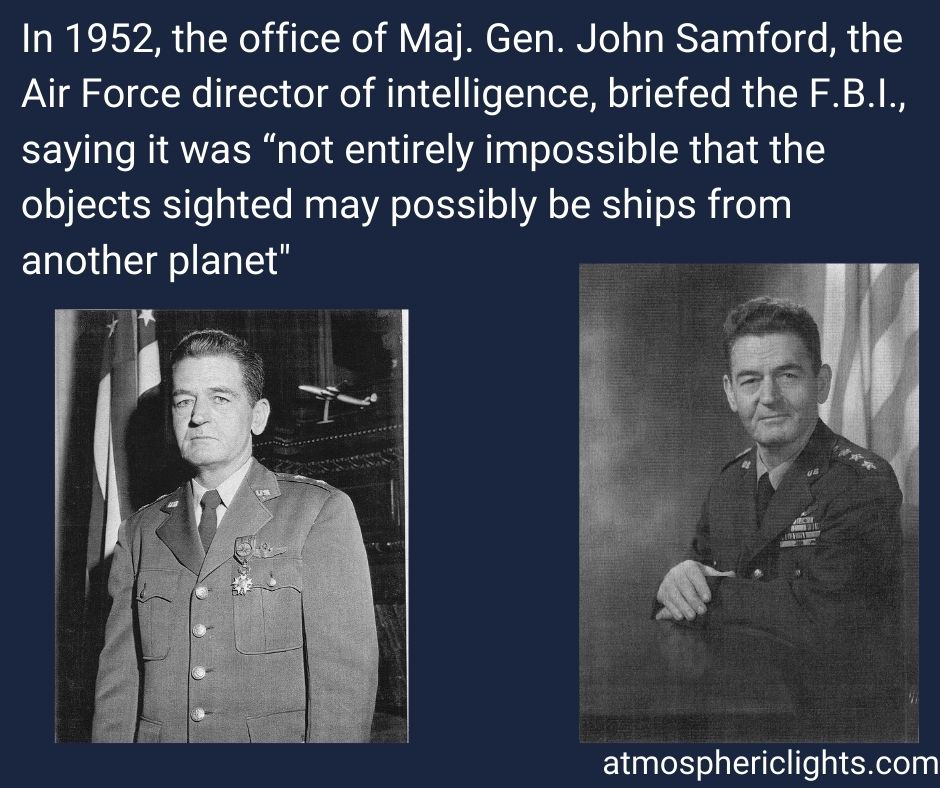
In 1952, the office of Maj. Gen. John Samford, the Air Force director of intelligence, briefed the FBI, saying it was “not entirely impossible that the objects sighted may be ships from another planet.
After Air Force planes scrambled to intercept glowing UFOs observed and picked up on radar over Washington in 1952, Samford called a news conference to calm the nation.
Maj. Gen. Samford’s stated that they had analyzed between 1,000 and 2,000 reports and that most had been explained.
“However,” he admitted, a certain percentage of the UFO sightings, “have been made by credible observers of relatively incredible things. It is this group of observations that we now are attempting to resolve.”
CIA’s Involvement In UFOs
H. Marshall Chadwell, the assistant director of scientific intelligence for the CIA, concluded in a memo about the UFOs to the Director of Central Intelligence, the head of the Central Intelligence Agency (CIA), and the other intelligence agencies in the United States, Walter Bedell Smith, that “sightings of unexplained objects (UFOs) at great altitudes and traveling at high speeds in the vicinity of major U.S. defense installations are of such nature that they are not attributable to natural phenomena or known types of aerial vehicles.”
Furthermore, Chadwell feared that the Soviets could plant UFO reports as a psychological warfare exercise to sow “mass hysteria and panic.”
By 1953, authorities were concerned that communication channels were becoming clogged by hundreds of UFO reports.
Even false alarms could be dangerous, and defense agencies were worried since the Soviets might take advantage of the situation by simulating or staging a UFO wave and then attack.
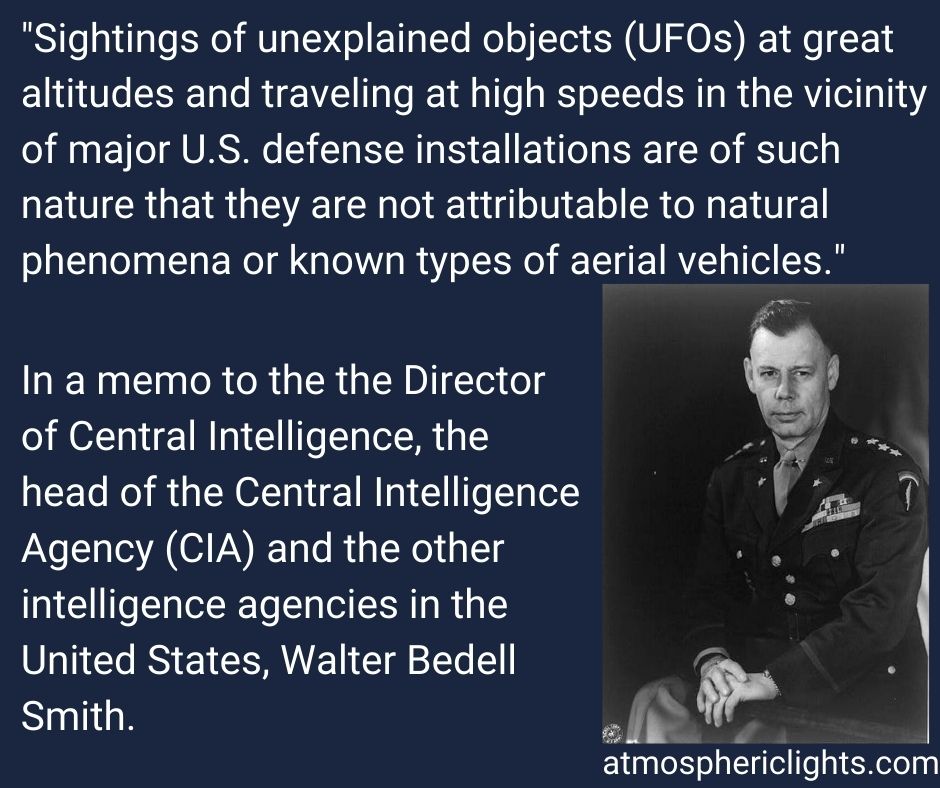
The CIA devised a plan for a “national policy” on what should be told to the public regarding the UFO phenomenon to “minimize the risk of panic.”
The CIA issued a secret report recommending a broad educational program for all intelligence agencies, with the aim of “training and debunking.”
The use of actual cases showing first the ‘mystery’ and then the ‘explanation’ would be forceful,” the report said. Debunking “would be accomplished by mass media such as television, motion pictures, and popular articles.”
The plan involved using advertising experts, psychologists, amateur astronomers, and even Walt Disney cartoons to create propaganda to decrease public interest.
And civilian UFO groups should be “watched” because of their “great influence on mass thinking if widespread sightings should occur.”
CIA’s legacy endures in the aura of ridicule surrounding UFO reports, inhibiting scientific progress. “The implication in the CIA report was that UFOs were a nonsense (nonscience) matter, to be debunked at all costs,” Allen Hynek wrote. “It made the subject of UFOs scientifically unrespectable.”
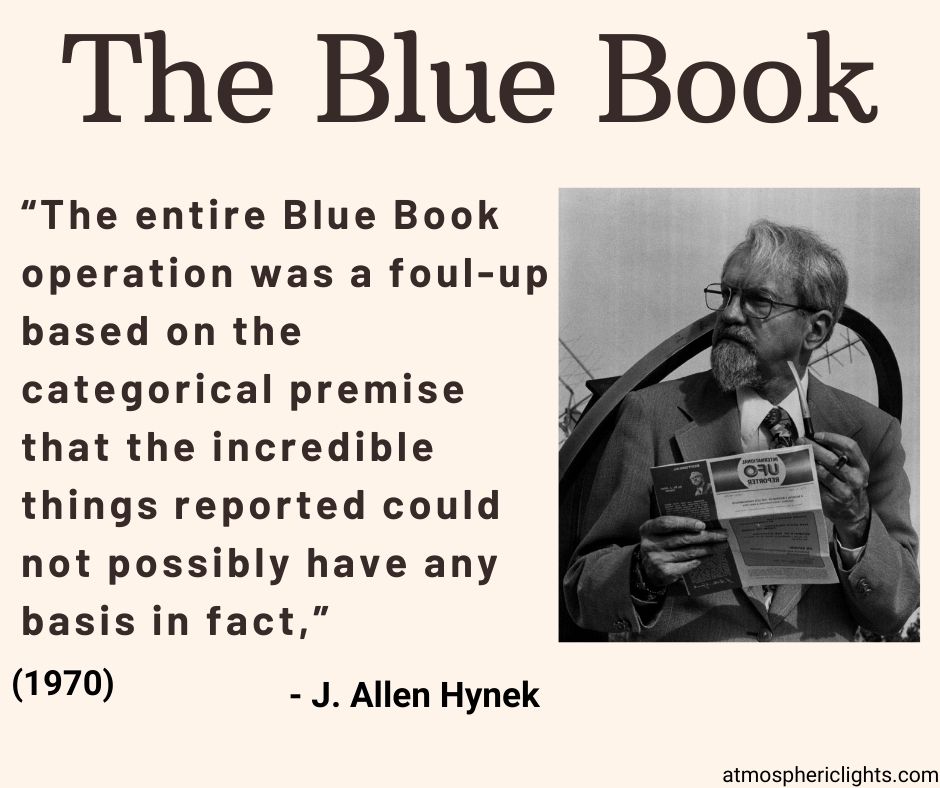
J. Allen Hynek, the former UFO skeptic, eventually concluded that UFOs were a real phenomenon in urgent need of scientific attention, with hundreds of cases in the Blue Book files still unexplained.
Many of the “closed” UFO cases were resolved with ridiculous, often infuriating explanations, and sometimes by J. Allen Hynek himself.
When Blue Book ended in late 1969, the Air Force flatly lied to the American people, issuing a fact sheet claiming that no UFO had ever been a threat to national security; that UFOs did not describe “technological developments or principles beyond the range of present-day scientific knowledge”; and that there was no evidence that UFOs were “extraterrestrial vehicles.”
The Conclusions of Project Blue Book
- No single UFO reported, investigated, and evaluated by the Air Force has ever given any indication of a threat to the national security
- There has been no proof submitted to or discovered by the Air Force that UFO sightings categorized as “unidentified” represent technological developments or principles ahead of the range of present-day scientific knowledge
- Finally, there has been no evidence indicating that sightings categorized as “unidentified” are extraterrestrial vehicles.
The briefings for members of Congressional committees revealed that not much has changed since the ending of Project Blue Book.
Scientists and experts may know more about the behavior and characteristics of UFOs and are much closer to understanding the physics of how the technology operates about these UAPs/UFOs, according to AATIP (Advanced Aerospace Threat Identification Program) interviews and documents.
However, the government still attempts to keep UFO investigations and conclusions secret while denying citizens’ involvement.

